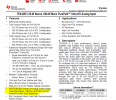No. Nor will I.
I listened to the Crown and the Rotel back to back and it wasn't even close. The Rotel is sitting in my storage unit. I replaced the Crown with the XTZ more for aesthetics than sound. Sound was similar with the XTZ having a darker background and less audible distortion (the more pricey Crown's have less distortion than the 1002).
I've done more intense listening between the Denon and the XTZ. The differences are more subtle but still apparent. I had the Denon in my system for several months (bought as my wife really wanted an integrated to simplify listening to music rather than the frankenstein tube pre-amp with linear power supply into the XTZ power amp I had before) and I just felt like something was missing. I hooked up the XTZ again but removed the tube pre, just went straight from my DAC and whatever was missing was back in spades. Mostly clarity, nuance and bass punch for which I sacrificed a bit of smoothness and warmth in female vocals in particular.
So admittedly non-scientific. I could live with either but definitely prefer class D.
The argument could be made that perhaps it's just having gobs of power on tap makes a bigger difference than people generally acknowledge.
I listened to the Crown and the Rotel back to back and it wasn't even close. The Rotel is sitting in my storage unit. I replaced the Crown with the XTZ more for aesthetics than sound. Sound was similar with the XTZ having a darker background and less audible distortion (the more pricey Crown's have less distortion than the 1002).
I've done more intense listening between the Denon and the XTZ. The differences are more subtle but still apparent. I had the Denon in my system for several months (bought as my wife really wanted an integrated to simplify listening to music rather than the frankenstein tube pre-amp with linear power supply into the XTZ power amp I had before) and I just felt like something was missing. I hooked up the XTZ again but removed the tube pre, just went straight from my DAC and whatever was missing was back in spades. Mostly clarity, nuance and bass punch for which I sacrificed a bit of smoothness and warmth in female vocals in particular.
So admittedly non-scientific. I could live with either but definitely prefer class D.
The argument could be made that perhaps it's just having gobs of power on tap makes a bigger difference than people generally acknowledge.
That sounds about right when using a very high power amp on difficult loads/speakers.
I'm not so sure about this claim though. But you did go from a 60W/ch amp to hundreds of watts. Have you been able to do a A/B blind listening test with a switchbox to compare the amps?


